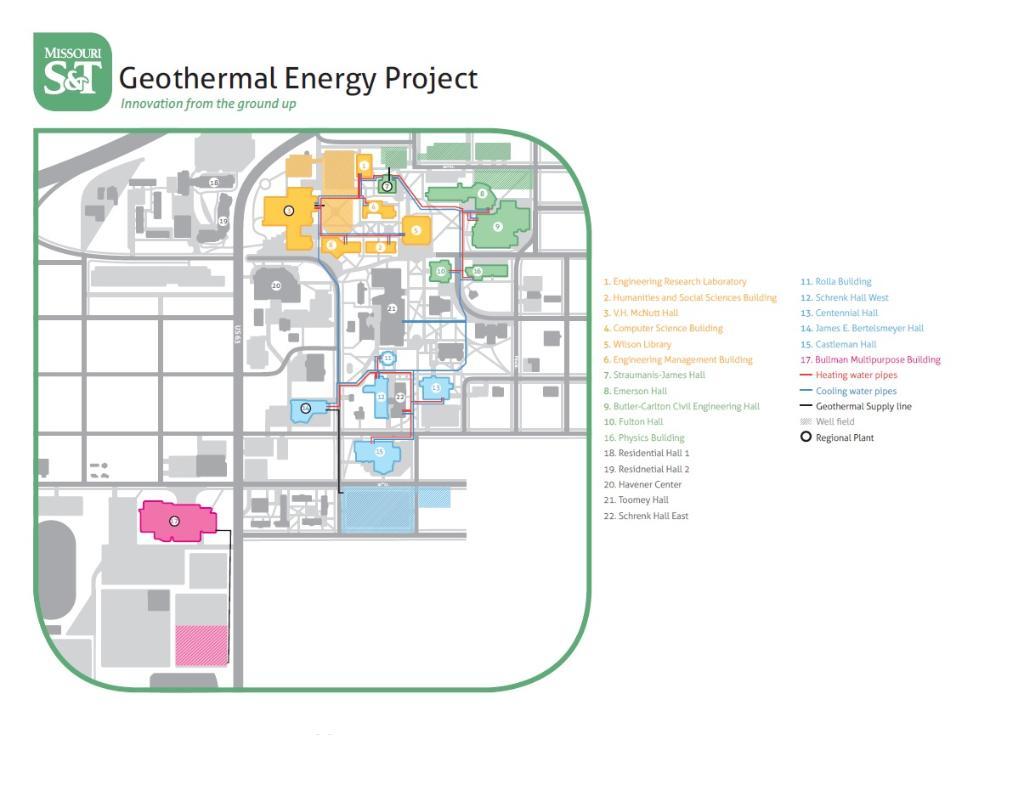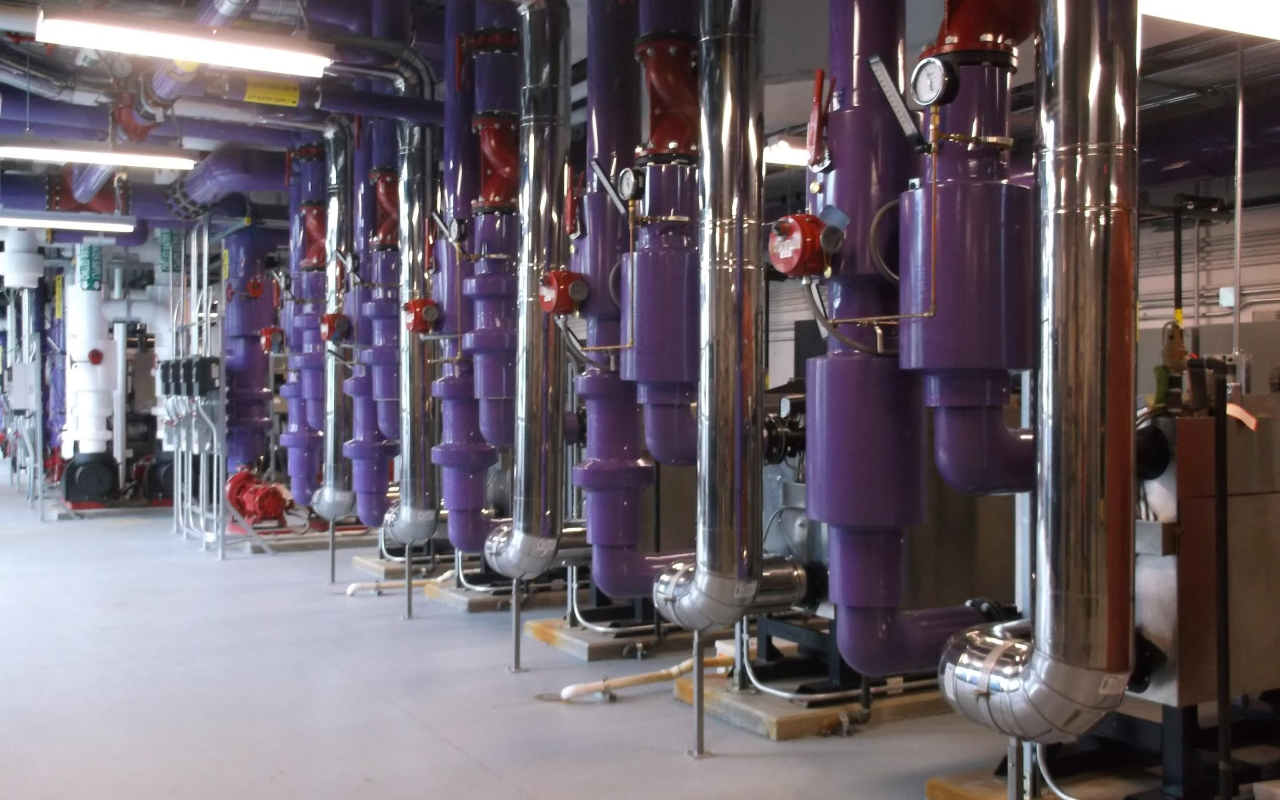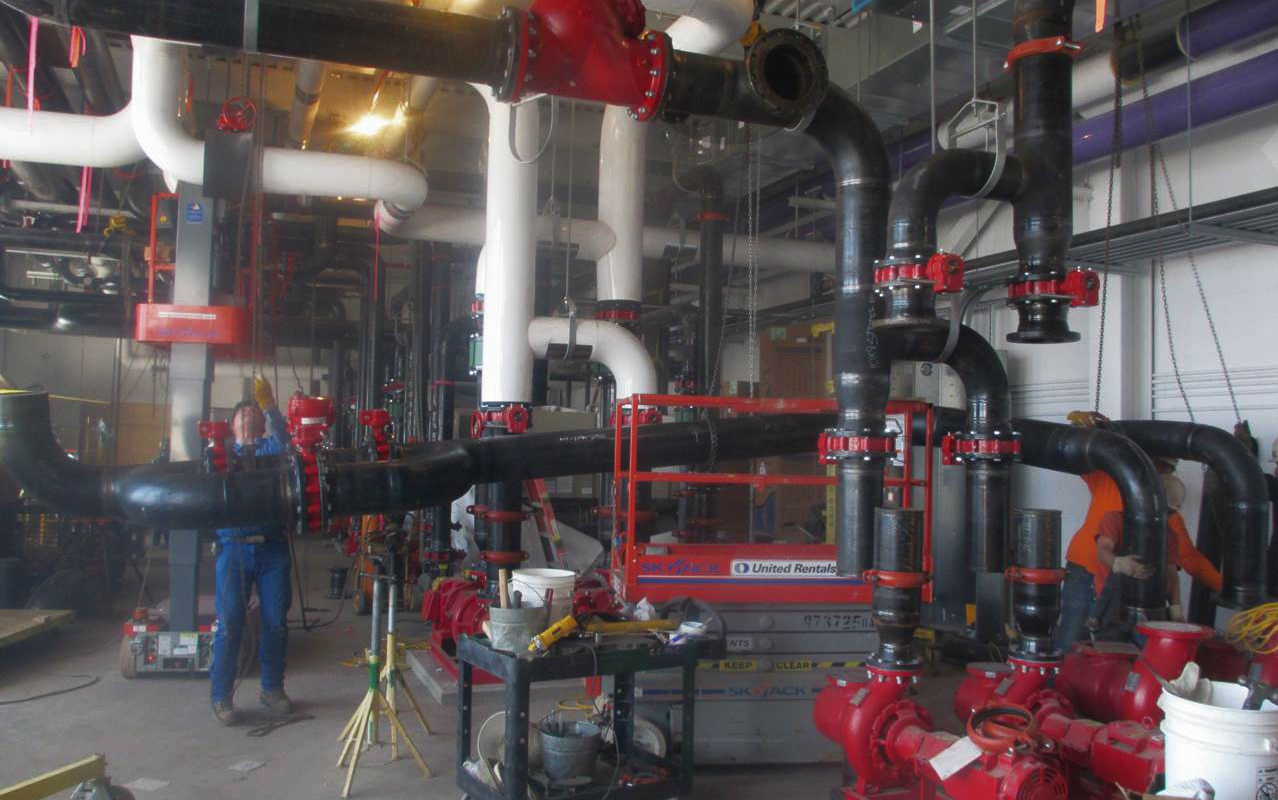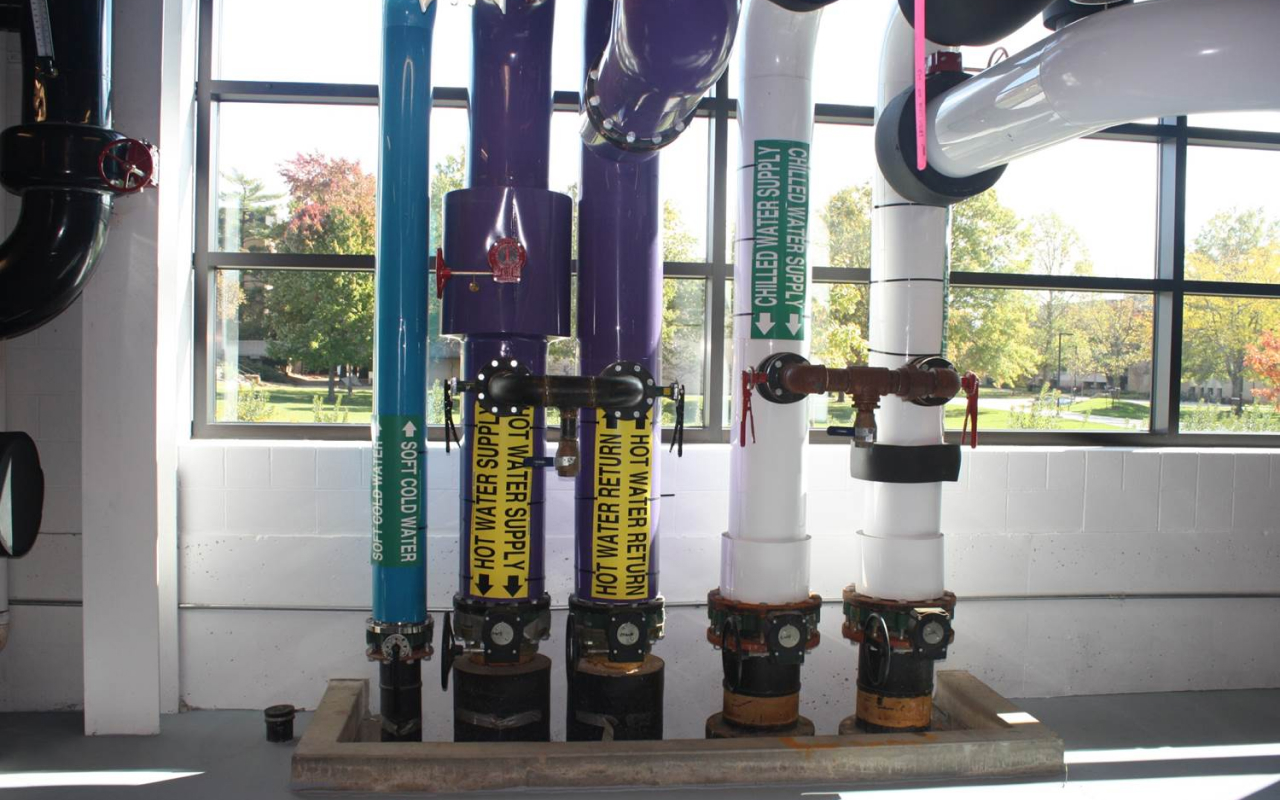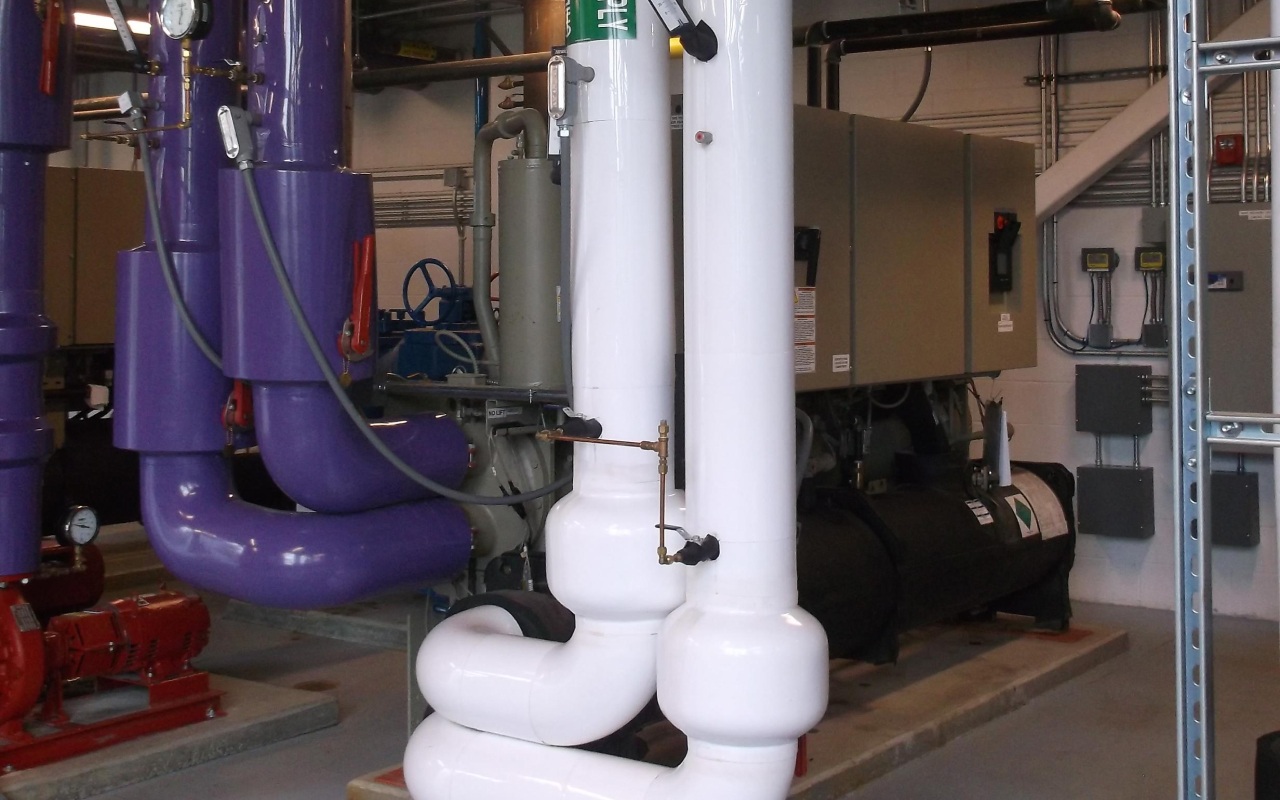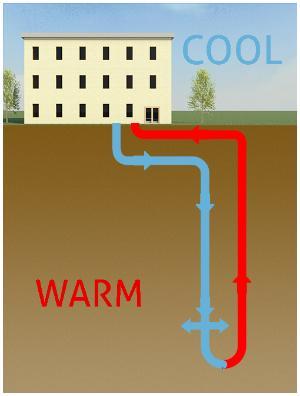Water Savings
The stated goal for water usage was to save 10 million gallons with the installation of the geothermal system. First-year water savings totaled over one-and-a-half times the projected goal at 18.7 million gallons, with nearly half of that amount resulting from shutting down the old power plant.
The dark green portions of the stacked bar graph below represent water usage directly affected by the geothermal project. This usage came from two areas on campus: the old power plant, and rooftop cooling towers associated with the conventional chiller units now augmented by the new geothermal system.

Differences shown in the blue and dark green portions were omitted from water savings calculations in order to determine the geothermal system's stand-alone impact on water use, which is calculated to be approximately 16.5 million gallons. Another estimated 2.2 million gallons of collective water savings were found throughout the buildings serviced on the geothermal loop, and attributed to repair of hidden leaks in the water mains replaced during construction (not shown on graph).
"Balance of Water Use" represents the difference shown between the usage recorded by Rolla Municipal Utilities on the 15th of each month and the in-house meter readings done by S&T maintenance staff on the final day of each month. The geothermal system is constantly undergoing efficiency evaluation during the course of its operational service life. The data collected is then used to fine-tune system parameters and maximize future water savings over time.
Energy Savings
Before the geothermal system was in place, the power plant provided steam to the campus for most heating and some cooling needs. Additionally, the plant also supplied a small percentage of campus power. Once the geothermal system was operational in May of 2014, the power plant's coal and wood-fired boilers were shut down and decommissioned.
The geothermal system provides heating and cooling to the campus through hot and chilled water distribution systems. Today, all electricity used on campus is delivered by the local municipal utility, of which80% is renewable wind energy.
Due to the efficiency differences between combusting fuel to produce and distribute steam versus utilizing heat recovery chillers connected to geothermal well fields, the anticipated savings for the project was a reduction of 50% of energy consumed on the campus. During the first year of operation, the geothermal system reduced total energy use by 57% relative to 2009 and 60% relative to 2010. As the graph below clearly indicates, campus energy demand has peaked in January for the last seven fiscal years. In the two years following the installation of the geothermal system, the average January kBTU consumption fell to less than half of pre-geothermal levels, and total average monthly consumption has shrunk by 56%. 2016 saw a 1% increase in campus energy efficiency due to ongoing analysis and refinement of the system.
Emission Reductions
One of the most precious resource on the planet is the air that we breathe. Ever since the industrial age, the ability to keep Earth's atmosphere clean has increased in difficulty. One emission that has been a big factor in preventing us from keeping the Earth's atmosphere clean is carbon dioxide emissions. In 2009, a campus-wide energy audit discovered the S&T power plant was responsible for the release of 32,000 tons of carbon dioxide and upon the completion of the geothermal project and the decommission of the power plant, the burden of the 32,000 tons of carbon dioxide was immediately eliminated. Although the 32,000 tons of carbon dioxide emissions was removed from the total emissions from the university, the campus energy demand increased and so we requested , through Rolla Municipal Utilities, additional energy, most of which is provided by wind energy. By doing this, it was found that, the net reduction of carbon dioxide emissions was found to 25,017 the first year of operation of the geothermal system and in 2019 it was found that the net reduction of carbon dioxide emissions is 25,071 tons.


